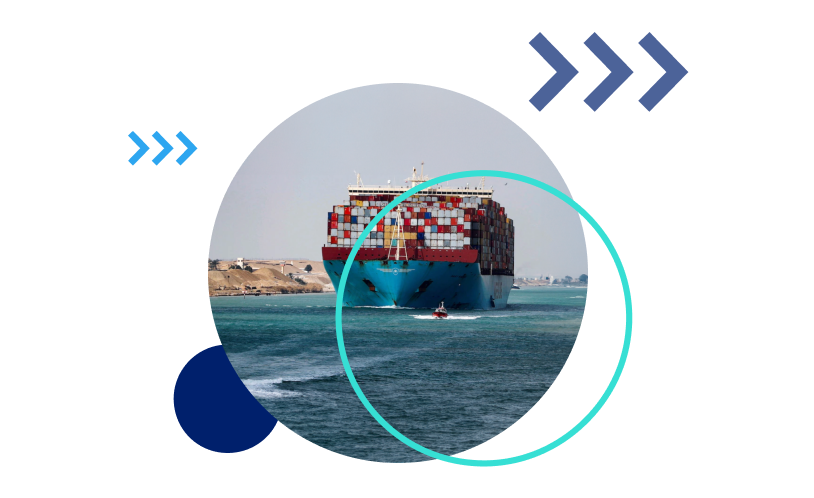By Brandon Rollins
Shipping damage is a major hassle– and unfortunately common. In fact, as many as 10% of eCommerce packages arrive damaged. And while this is obviously a concern for buyers, sellers are affected too. Even if the seller is not at fault for the damage, they’ll likely still take the heat – and pay the price in increased return costs and damage to their brand.
As an eCommerce store owner, minimizing shipping damage is crucial. Practical steps include using quality packaging materials and collaborating with shipping partners to emphasize careful handling. Considering insurance coverage is also wise to offset potential losses. These measures not only protect physical products but also help maintain customer trust and brand integrity in a competitive market.
Shipping Damage Prevention
First, here are a few overarching goals for shipping damage prevention. Every package should be able to:
- Withstand a four-foot drop – this is a common height from which packages can be dropped in transport.
- Handle big changes in heat and humidity.
- Survive freight transport, order fulfillment, and last-mile delivery.
With these goals in mind, let’s dive into the details. Here are seven specific ways you can prevent shipping damage.
1. Start with the Freight Process
The initial shipment of goods from the manufacturer to the warehouse is one of the most difficult, damage-prone parts of the process. In fact, most companies see some percentage of damage before the products even arrive at the warehouse. For this reason, small tweaks to the initial freight shipping process can have major benefits:
- Find a trucking company with a good reputation. This is one of the simplest ways to prevent careless transit damage.
- Use good pallets and make sure the pallets are wrapped well.
- Stack heavy boxes like bricks to distribute the weight evenly.
- If your goods are particularly fragile, ask for a truck with air-ride suspension.
- If your goods are sensitive to heat or humidity, double box them.
2. Fill Void Space
At any stage of delivery, from freight to last-mile delivery, having empty space in boxes is practically begging for damage. Goods can rattle around inside boxes and shatter. Boxes can shift around in larger cartons, damaging both the goods inside and the boxes themselves.
For this reason, you should proactively fill void space in packages. Use bubble wrap for fragile goods. Use brown paper or single-ply corrugated roll to cheaply fill space. If you have a lot of extra space, use air cushions.
3. Use Sturdy Outer Materials
As you can imagine, sturdy outer materials also provide good protection against damage. Polybags are great for preventing water damage. Padded mailers are cheap ways to safely ship small goods. Corrugated boxes and flat rate mailer boxes are good rigid packaging options for heavier or larger items.
4. Increase Water Resistance
When you’re shipping liquid items, it’s not uncommon for the liquids to break inside the container. This can have the negative consequence of soaking the dry components in the package– which means an unpleasant experience for the recipient.
The lesson here is simple: isolate liquids from all other items in a package. Even better, enclose the liquids and other sensitive goods in polybags. That means if they spill, it won’t affect the rest of the package.
5. Separate Fragile Materials
If you’re shipping more than one fragile item in the same box, you need to take special measures to ensure they ship without damage. One of the ways you can package fragile items for shipping is by dividing them with partitions made of corrugated material. If that doesn’t work as needed, you can always double box items instead.
6. Properly Label Packages
As damage-prone as transportation can be, human error is still a major issue. Two simple steps can help cut down on human error. First, mark fragile packages with the word “Fragile.” Second, if you have an item with a definite up-side and down-side, use a “This Side Up” label to indicate which is which.
7. Buy Parcel Insurance
Last but not least, for the inevitable breakdowns in the process, there is always parcel insurance. Technically, this is not a way to prevent shipping damage, but shipping damage insurance will protect you from financial damage incurred by shipping damage.
The simple fact is that some damage is not preventable. By insuring fragile packages, you can protect your bottom line. This will also make it a lot easier to ship items to customers when you need to.
Final Thoughts
Shipping damage is an unfortunate reality in the world of online business, but it doesn’t have to be an inevitable or catastrophic occurrence. Implementing a few straightforward measures can significantly decrease the incidence of damaged items during transit. This proactive approach not only minimizes the hassle of returns but also safeguards your brand’s reputation. As you navigate the complexities of eCommerce, prioritizing the secure transportation of goods becomes a strategic investment in the longevity and success of your business.
Brandon Rollins is a Marketing Consultant at Fulfillrite, a third-party logistics company specializing in order fulfillment for eCommerce and crowdfunding campaigns. Learn how Fulfillrite can help your business with simple, fast order fulfillment here.



